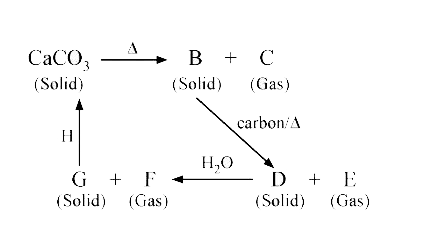Mark the correct statements about the friction between two bodies
static friction is always greater than the kinetic friction.
coefficient of static friction is always greater than the coefficient of kinetic friction
Limiting friction is always greater than the kinetic friction
Limiting friction never less than static friction.
The correct Answer is:B, C, D
To determine the correct statements about the friction between two bodies, we will analyze each option based on the key concepts of friction.
1. Understanding Frictional Force:
- The frictional force f between two bodies is given by the formula:
f=μ⋅N
where μ is the coefficient of friction (either static or kinetic) and N is the normal reaction force.
2. Analyzing Option 1:
- Statement: "Static friction is always greater than kinetic friction."
- Analysis: The coefficient of static friction (μs) is always greater than the coefficient of kinetic friction (μk). However, static friction can vary depending on the applied force up to its maximum value (limiting friction). Once the object starts moving, kinetic friction takes over, which is generally less than the maximum static friction. Therefore, this statement is incorrect.
3. Analyzing Option 2:
- Statement: "The coefficient of static friction is always greater than the coefficient of kinetic friction."
- Analysis: This is true as per the key concept that μs>μk. Therefore, this statement is correct.
4. Analyzing Option 3:
- Statement: "Limiting friction is always greater than kinetic friction."
- Analysis: Limiting friction is defined as the maximum value of static friction before motion occurs. Since kinetic friction is the friction acting on a moving object, it is always less than the maximum static friction. Thus, this statement is correct.
5. Analyzing Option 4:
- Statement: "Limiting friction is never less than static friction."
- Analysis: Limiting friction is the maximum static friction that can occur before motion starts. Therefore, it cannot be less than the static friction at any point before motion begins. This statement is also correct.
Summary of Options:
- Option 1: Incorrect
- Option 2: Correct
- Option 3: Correct
- Option 4: Correct
Final Answer:
The correct statements about the friction between two bodies are Options 2, 3, and 4.
---
- The frictional force f between two bodies is given by the formula:
f=μ⋅N
where μ is the coefficient of friction (either static or kinetic) and N is the normal reaction force.
- Statement: "Static friction is always greater than kinetic friction."
- Analysis: The coefficient of static friction (μs) is always greater than the coefficient of kinetic friction (μk). However, static friction can vary depending on the applied force up to its maximum value (limiting friction). Once the object starts moving, kinetic friction takes over, which is generally less than the maximum static friction. Therefore, this statement is incorrect.
- Statement: "The coefficient of static friction is always greater than the coefficient of kinetic friction."
- Analysis: This is true as per the key concept that μs>μk. Therefore, this statement is correct.
- Statement: "Limiting friction is always greater than kinetic friction."
- Analysis: Limiting friction is defined as the maximum value of static friction before motion occurs. Since kinetic friction is the friction acting on a moving object, it is always less than the maximum static friction. Thus, this statement is correct.
- Statement: "Limiting friction is never less than static friction."
- Analysis: Limiting friction is the maximum static friction that can occur before motion starts. Therefore, it cannot be less than the static friction at any point before motion begins. This statement is also correct.
- Option 1: Incorrect
- Option 2: Correct
- Option 3: Correct
- Option 4: Correct
The correct statements about the friction between two bodies are Options 2, 3, and 4.
Topper's Solved these Questions
- FRICTIONBOOK - HC VERMA ENGLISHCHAPTER - FRICTIONEXERCISE - Exercises
31 Videos
- FRICTIONBOOK - HC VERMA ENGLISHCHAPTER - FRICTIONEXERCISE - Questions for short Answer
11 Videos
- FRICTIONBOOK - HC VERMA ENGLISHCHAPTER - FRICTIONEXERCISE - Objective -1
10 Videos
- FLUID MECHANICSBOOK - HC VERMA ENGLISHCHAPTER - FLUID MECHANICSEXERCISE - All Questions
90 Videos
- GRAVITATIONBOOK - HC VERMA ENGLISHCHAPTER - GRAVITATIONEXERCISE - Question for short Answers
18 Videos
Similar Questions
Knowledge Check
Mark the correct statements about halogens.
AElectron affinity of halogens is in the order F>Cl>Br>I.BHF is the strongest hydrohalic acid.CF2 has lower bond dissociation energy than Cl2DAll halogens show variable oxidation states.
Mark the correct statement/s-:
View Solution
The correct statement about F is
View SolutionMark the correct statement (s).
View SolutionMark the incorrect statement about ATP.
View SolutionMark the correct statements (s).
View SolutionChoose the correct statement(s) about the frictional force between two solid surfaces in contact
View SolutionSelect the correct option about the friction between the two bodies
View Solution
